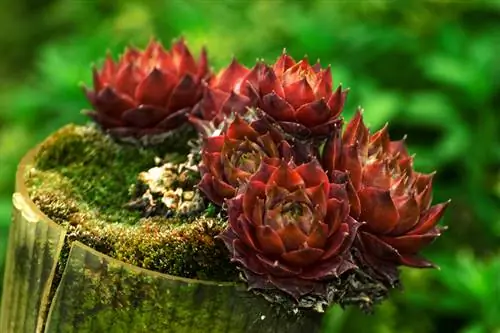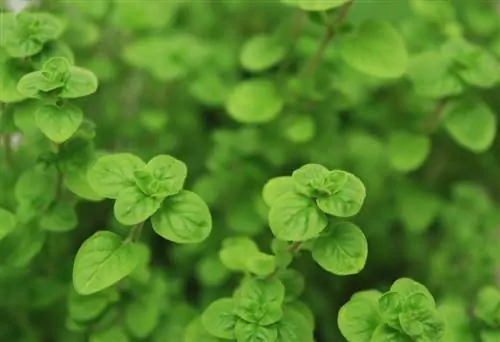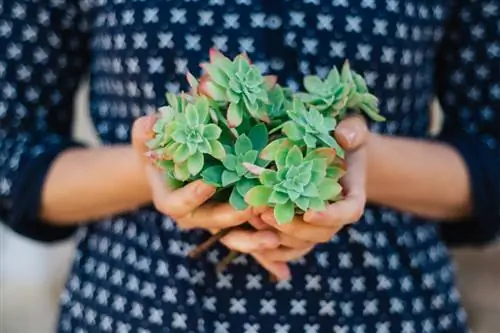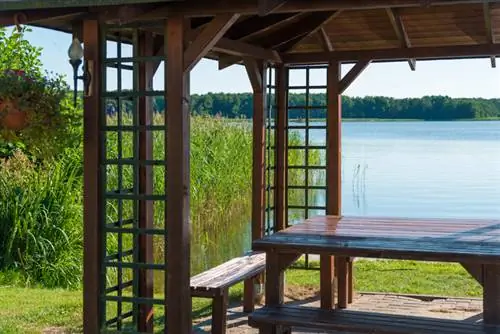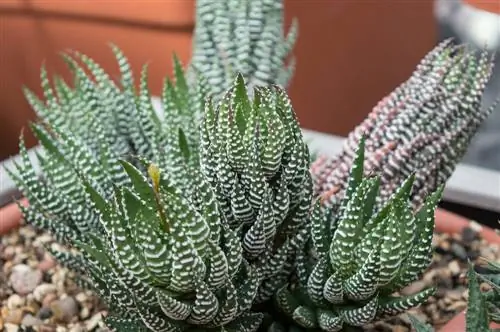- Author admin [email protected].
- Public 2023-12-16 16:46.
- Last modified 2025-01-23 11:20.
The different species and varieties of houseleek (Sempervivum), like many thick-leaved plants, are extremely undemanding and easy to care for. The plants only need a dry, sunny and warm location with poor soil - otherwise you don't need to worry much about the outdoor succulents.
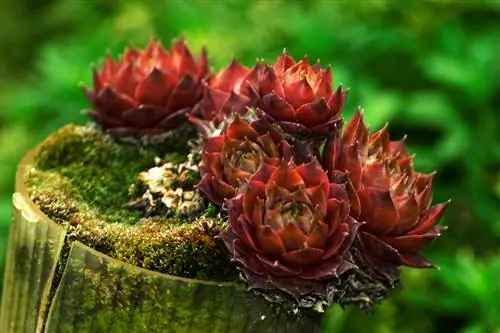
How do you properly care for houseleeks?
Caring for houseleeks is easy: they need a dry, sunny location with poor soil, little water and no regular fertilization or pruning. Waterlogging and excessively humid conditions should be avoided to avoid disease. They are hardy in winter.
How much water does the houseleek need?
Houseleeks can survive on very little liquid for a very long time - the thick leaves serve as excellent water reservoirs, which is why the plant can take care of itself. Only specimens cultivated in planters should be watered from time to time - but carefully, because houseleeks react extremely sensitively to too much water and especially waterlogging.
Can you fertilize houseleeks? If yes, when and with what?
Fertilization is basically not necessary for planted houseleeks, but you can supply the plants with a little (!) horn shavings (€52.00 on Amazon) or compost when planting. This measure ensures more intense leaf coloring. Specimens grown in pots can be provided with a little blue seed or succulent fertilizer if necessary - but this will only rarely be the case.
Do you have to cut house roots?
Regular pruning of houseleeks is not necessary. You can only remove the dead rosette after flowering has finished, as it will die anyway.
What should you pay particular attention to when caring for houseleeks in pots?
You can plant houseleeks in all kinds of planters, as long as they always have good drainage. Excess water should be able to drain off immediately, otherwise the plant risks rotting or developing root rot. For this purpose, the plant substrate is mixed with plenty of sand or lava grit, and at the bottom of the pot there is also a layer of expanded clay or a similar drainage layer. To prevent the obligatory drainage hole from becoming blocked, you can cover it with a water-permeable fleece.
Should you transplant houseleeks in a pot?
Regular repotting is not necessary for houseleeks. Quite the opposite: Like so many other thick-leaved plants, the semperviva do not particularly appreciate such a measure.
Are houseleeks affected by diseases or pests?
Houseleeks are very robust. Infestation with fungi or pests is extremely rare. Poor growth, pale leaf color or brittle shoots can usually be traced back to an unsuitable and/or too moist location.
Are houseleeks hardy?
As mountain plants, houseleeks are absolutely hardy and do not require any additional protection in winter. Quite the opposite, because the plants need the winter cold for their well-being. This also applies to potted specimens, which should only be placed on a Styrofoam or wooden base. Only very wet winters can be problematic.
Tip
Houseleeks thrive in locations where other plants would not thrive. The plants are used, for example, to plant walls, wall crowns or roofs.

